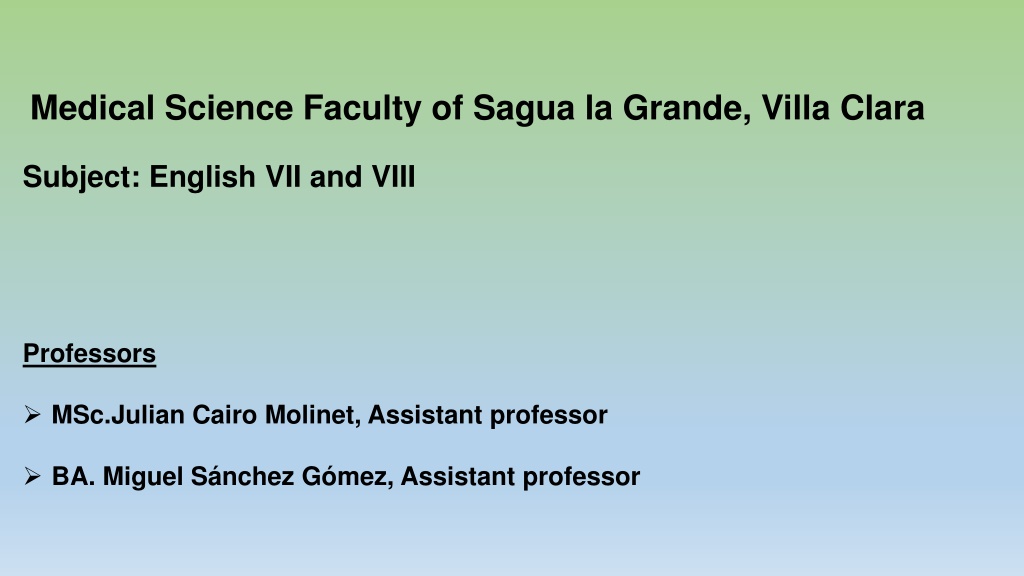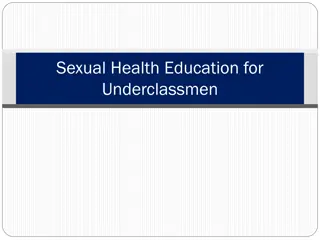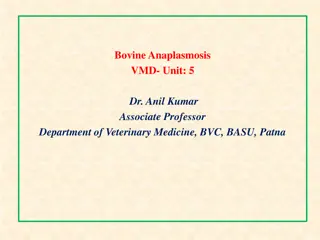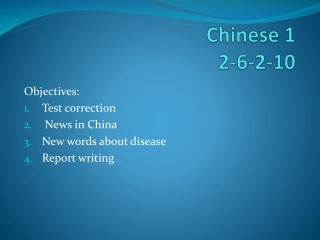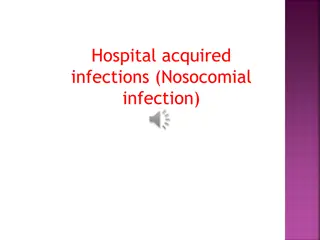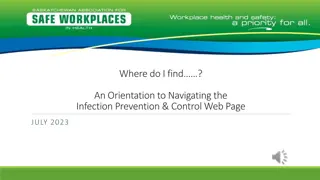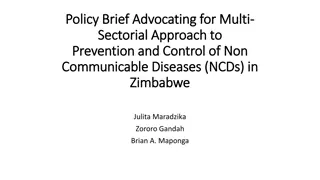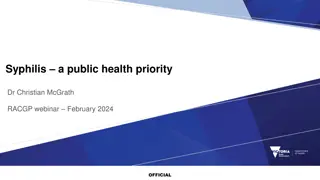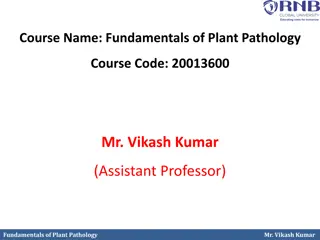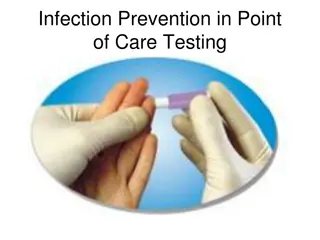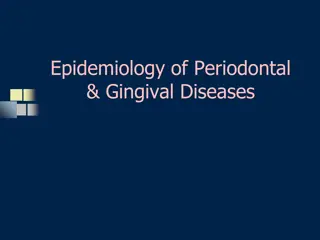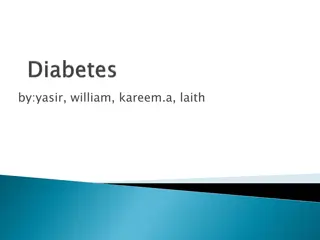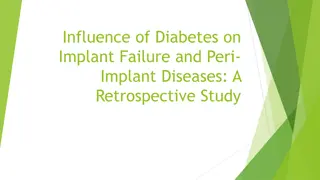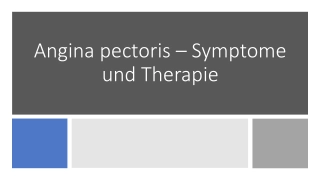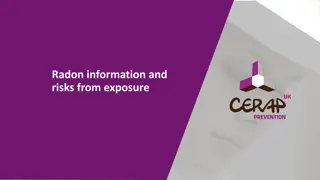Understanding Sexually Transmitted Diseases (STDs): Risks, Prevention, and Symptoms
Learn about sexually transmitted diseases (STDs), their causes, transmission methods, and risk factors. Discover ways to reduce the risk of contracting an STI and understand the general signs and symptoms. Educate yourself to protect against STDs and promote sexual health.
Download Presentation
Please find below an Image/Link to download the presentation.
The content on the website is provided AS IS for your information and personal use only. It may not be sold, licensed, or shared on other websites without obtaining consent from the author. Download presentation by click this link. If you encounter any issues during the download, it is possible that the publisher has removed the file from their server.
Presentation Transcript
Medical Science Faculty of Sagua la Grande, Villa Clara Subject: English VII and VIII Professors MSc.Julian Cairo Molinet, Assistant professor BA. Miguel S nchez G mez, Assistant professor
Sexually transmitted diseases (STDs) Objective: To describe different features of Spontaneous Abortion in order to prepare students to talk about this medical condition and discuss a case in English
Sexually transmitted diseases (STDs) are infections that are passed from one person to another through sexual contact. The causes of STDs are bacteria, parasites, yeast, and viruses. There are more than 20 types of STDs, including: Chlamydia Genital herpes Gonorrhea HIV/AIDS HPV Syphilis Trichomoniasis
How are STDs transmitted? A person with an STD can pass it to others by contact with skin, genitals, mouth, rectum, or body fluids. Anyone who has sexual contact vaginal, anal, or oral sex with another person may get an STI.
What causes STIs? STIs are caused by bacterial or viral infections. Sexually transmitted infections caused by bacteria are treated with antibiotics. Those caused by viruses cannot be cured, but symptoms can be treated.
What are the risk factors for STIs? The following factors increase the risk of getting STIs: More than one sexual partner A partner who has or has had more than one sexual partner Sex with someone who has an STI History of STIs Use of intravenous drugs (injected into a vein) or partner use of intravenous drugs
How can I reduce the risk of getting an STI? Know your sexual partners and limit their number Use a latex condom Avoid risky sex practices
General signs and symptoms Abnormal vaginal discharge, which may have a strong smell A burning sensation when urinating Pain during intercourse Discharge from your penis A burning sensation when urinating Decreased appetite Fever
General signs and symptoms Burning or itching around the opening of your penis Pain and swelling in one or both testicles (although this is less common) General sick feeling (malaise) Muscle aches in the lower back, buttocks, thighs, or knees
Exams and Tests . Urine test .Culture of fluid from a blister or open sore. .Blood tests
Treatments for STDs Many STDs are easily treated once they are diagnosed. Treatments for the different types of infections can include: bacteria (including chlamydia, gonorrhoea and syphilis) require treatment with antibiotics (either one high dose or a course) parasites (including pubic lice and scabies) require treatment with medicated shampoos viruses (including genital herpes, HIV, hepatitis B and human papillomavirus (HPV)) do not have a cure. In most cases, there are treatments to help control the symptoms.
After studying this condition, write a paragraph answering the following questions. ( See also Useful Phrases Document). Send the text to: juliancm@infomed.sld.cu What are Sexually Transmitted Diseases? What are the main signs and symptoms? Who is at risk of this condition? How are they diagnosed? What is the differential diagnosis? What are the possible complications? What does the treatment include? What is the prognosis?
Useful phrases to give information about a medical condition Concept is defined/known as .. is Classification -The classification of ..includes . is classified into is the classification of .. -Signs and Symptoms -The most common signs and symptoms of _____include .. _____,_____,___and_____ are the most common signs and symptoms Risk factors -Risk factors for include -People with are at a higher risk for developing -In patients with a long history of is highly probable to suffer ________, _______, and________ are the main risk factors for developing ______
Diagnostic procedures/Exams and investigation/Lab tests The main diagnostic procedures/Exams and investigation/Lab tests for HBP are/include: ________,_____-and_________. HBP can by diagnosed by ___________,_______,and________. ________, _________, ________ and________are the main diagnostic procedures/Exams and investigation/Lab tests for HBP
Differential diagnosis The possibility of __________should not be excluded. ___________ is a very likely/ highly probable/ diagnosis. __________ can cause pain of similar severity and radiation, but _________ is ruled out in this case because The differential diagnoses are/include __________ and __________. Treatment/ management The treatment (for this condition) include The treatment (for this condition) is based on _____________ is the best treatment for this condition The treatment consists on_________
Prognosis The prognosis is good / poor / guarded / bad / reserved. The prognosis is good if the patient follows the treatment. Complication The complications of HBP are mainly The most common complication(s) is/ are Other complications associated with HBP include _________,________, and ________ are the most common complication of HBP .are well-recognized complications of the first episodes of HBP
Bibliography 1. Abbot, G. The Teaching of English as an International Language: A Practical Guide. La Habana: Editorial Revolucionaria; 1989. 2. Agnes, M. (Editor-in-chief) Webster s New World College Dictionary. 4th edition: New York: Macmillan; 1999. 3. Ballinger, Ph. Merrill s Atlas of Radiographic Positions and Radiologic Procedures. 8th Edition: Mosby; 1995. 4. Bates, B. Guide to Physical Examination and History Taking. 8th edition New York: Lippincott Williams & Wilkins; 2003. 5._______________. English through Medicine Two. Student s Book. Editorial Ciencias M dicas; 2007. 6._______________. English through Medicine Two. Teacher s Book. Editorial Ciencias M dicas; 2007. 7. Colectivo de Autores. English for Professional Nursing Communication. Student s Book. La Habana: Editorial Ciencias M dicas; 2004. 8. _______________ English for Professional Nursing Communication. Teacher s Book. La Habana: Editorial Ciencias M dicas; 2004.
